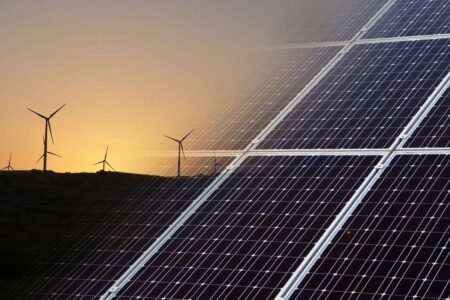The new EU Directive 2010/30/EC recasts the old Directive 92/75/EEC on the indication by labelling and standard product information of the consumption of energy and other resources by household appliances. However the old Directive only covered household appliances, the new Directive aims to extend this to commercial and industrial sectors and also some non-energy using products.
The Lisbon Strategy set out EU-wide energy targets, most significantly the 20-20-20 targets (20% lower greenhouse gas emissions, 20% of EU energy consumption from renewables, 20% reduction in energy use through energy efficiency measures) to be achieved by 2020. The new Directive falls under the objective for 20% energy efficiency gains and help towards the goals of sustainable production and consumption. The old Directive framework required retailers to display a comparative label showing the level of consumption of household products to consumers at the point of sale.
This system has a two pronged approach:
- Giving the opportunity for consumer to directly compare product consumption levels, thus allowing them to consider purchasing more efficient appliances which should save money in the long run through reduced running cost
- Giving an incentive to manufactures to position their products on the market and reap the benefits of better and more innovative products
However a subsequent impact assessment study showed that more savings in energy and reducing of negative environmental impacts could be achieved if the old Directive was extended to all energy-related product groups. Thus the limited scope of the old Directive restricts its potential to further contribute to the 20% energy efficiency gains target, so plans to widen the scope were put into place.
Widening the scope
The scope of the new Directive 2010/30/EC will be widened to include energy using products which previously did not fall under the scope of the old Directive, such as vending machine and cold storage rooms, and products related to energy efficiency that do not actually consume energy but “have a significant direct or indirect impact” on energy savings (e.g. window glazing and outer doors).
Other significant changes include:
- New efficiency classes A+, A++ and A+++ introduced on top of the A class
- Distance selling now covered(i.e. internet and catalogue sales)
- A requirement to reflect the labelling class in advertisements where energy-related or price information is disclosed
- EU countries encouraged to use the top energy labelling class for public procurement purposes
Defining the products
The new Directive sets out a general framework but does not mention any products specifically; however it has delegated power to the European Commission to create regulations covering each product. What is noticeable under Article 5 and 6 is that products are not covered by Directive 2010/30 UNTIL the Commission has laid down regulations covering a specific product.
Therefore over the coming months companies must keep a close eye to see which products are covered by the subsequent Commission Regulations and when they come into force. Once the regulations are published in the Official Journal the new label will become mandatory for all products placed on the market one year after.
However the new Directive does have express limitations and shall not cover
- second-hand products;
- any means of transport for persons or goods;
- the rating plate or its equivalent affixed for safety purposes to products.
Responsibilities
The new Directive clearly sets out the responsibilities of both the manufacturers of products and those that sell the products, each have separate responsibilities.
Manufacturers must provide:
1. technical documentations, which include;
a. a general description of the product;
b. test reports including those carried out by relevant notified organisations (if relevant)
c. the results of design calculations carried out (if relevant)
d. if any values are used for similar models, these models must be indefinable
2. a product ‘fiche’ (i.e. a standard table of information relating to the product)
Retailers must:
- ensure that products covered by a Commission regulation have the appropriate label in the correct language
- make labels properly viable
- ensure the product fiche is available in the documentation that comes with the product
Entry into force
The new Directive came into force on 19 June 2010 but the EU countries have until 20 of June 2011 to implement its provisions into national law. However, as already mentioned, the legal requirements for specific products will not come into force until later; more specifically one year after the relevant Commission Regulations has been enacted.
REFERENCES
Entry into force: 19.06.2010
Deadline for transposition in the Member States: 20.06.2011
Official Journal: OJ L153/1 of 19 May 2010
Act Amended:
Official Journal: OJ L 297 of 13.10.1992






